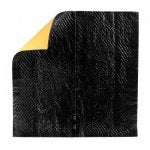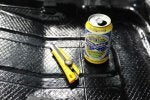Well its been three and a half years since I started Phase II of my bare metal rebuild and I'm finally at the stage I spent long hours in a dirty garage thinking about: reassembly. The milestone seemed to warrant a new thread. BIG THANKS to everyone who helped me along the way with advice, parts and enthusiasm. All appreciated equally!
I'm going to post my progress and many many questions here. I took tons of pictures at each phase but naturally there are always things I missed so let's get right down to it:
Any tips on routing the trunk latch cable? From the pull does it go between the wheel arch and inner wing as shown?
![]()
In the trunk which direction does it take and does it pass under the sheet metal supports at the latch?
![]()
A few glamour shots... amazing how it starts to look like a car.
![]()
And something you never think of: nice to have a color that looks good with the brake lights! Incidentally - one of many parts I'm missing is the D/S tail light - holler if you have one.
![]()
I'm going to post my progress and many many questions here. I took tons of pictures at each phase but naturally there are always things I missed so let's get right down to it:
Any tips on routing the trunk latch cable? From the pull does it go between the wheel arch and inner wing as shown?

In the trunk which direction does it take and does it pass under the sheet metal supports at the latch?

A few glamour shots... amazing how it starts to look like a car.

And something you never think of: nice to have a color that looks good with the brake lights! Incidentally - one of many parts I'm missing is the D/S tail light - holler if you have one.




























